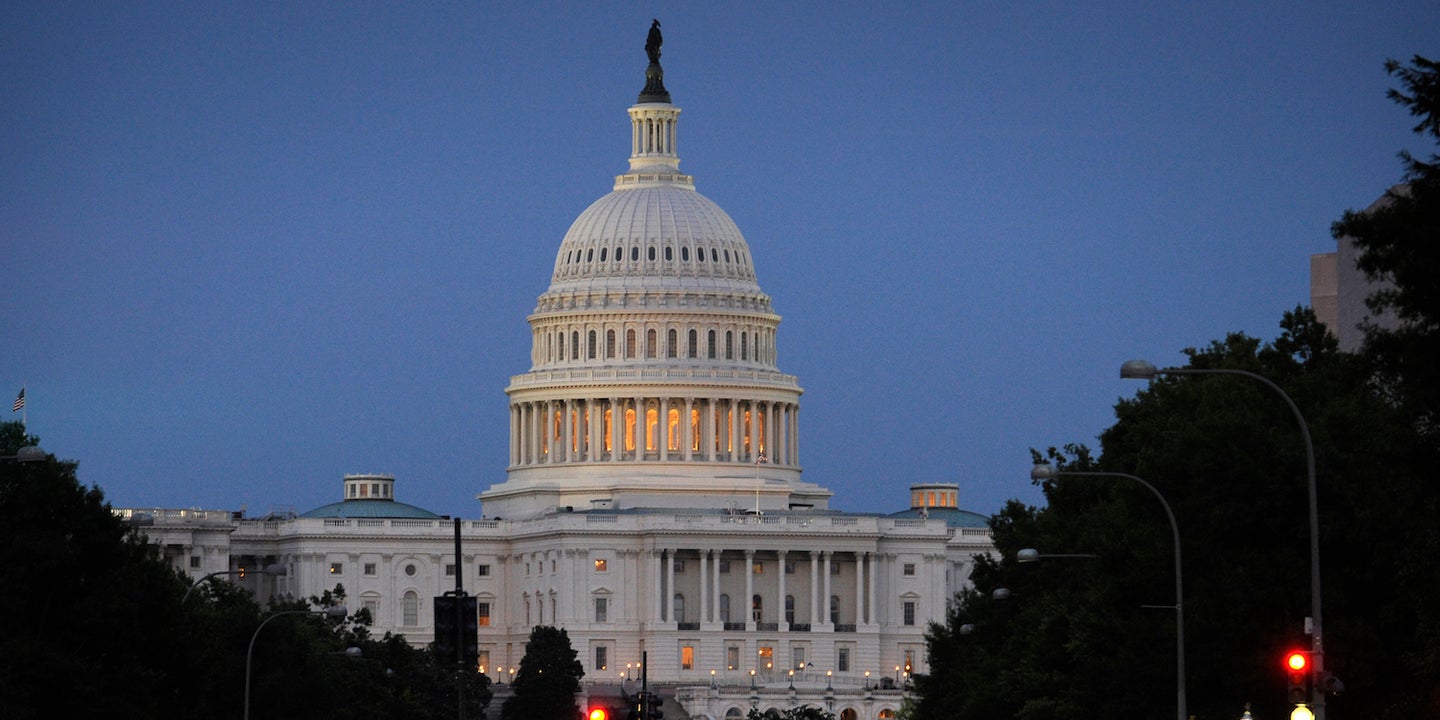Three dozen military veterans in Congress voted against expanding GI Bill benefits
The new bill would expand GI Bill benefits to National Guard and Reserve members.

A bill that would expand eligibility for Post-9/11 GI Bill Benefits to members of the military’s National Guard and Reserve passed the House of Representatives last Wednesday without the support of 36 military veterans and current members of the National Guard and Reserves who voted against the bill.
Among those 36 are members of all service branches, from former enlisted soldiers to general officers. It includes some notable names, from Rep. Don Young (R-Alaska), an Army veteran and the House’s longest-serving member, to Rep. Dan Crenshaw (R-Texas), the former Navy SEAL known for his Saturday Night Live appearance and efforts to root out “woke ideology” from the military.
The nays represented a little less than half of the 76 members of the House who are military veterans, according to the Congressional Research Service. The ostensible reason for the no votes was budgetary concerns. According to the Congressional Budget Office, the new bill could cost $1.9 billion over the next decade.
Rep. Mike Bost (R-Illinois), the ranking member of the House Veterans Affairs Committee and one of the veteran lawmakers to vote no on the bill, agreed that Congress “must take a hard look at duty-status reform and the potential expansion of benefits regarding reservists, but this bill before us today would be an unwise expansion of benefits,” the Marine Corps veteran said. “Training has never counted towards eligibility, and members of the Guard and Reserve know that when they sign up.”
The bill would allow any day in which service members were in uniform under federal orders to count towards eligibility for education benefits offered under the GI Bill.
“Not only are these National Guard and Reserve members risking their lives to serve our country, but they’re also forced to put their civilian lives on hold when they’re called up, leaving behind their families and interrupting civilian careers,” Rep. Mike Levin (D-Calif.), who sponsored the bill, said on the House floor. “In some of those settings, they are serving side by side with active-duty members doing similar jobs and facing similar risks, but they’re not earning the same GI Bill benefits as their peers. That’s unacceptable.”
Most active-duty service members acquire the full array of benefits after 36 months of service, but service members begin accruing eligibility for a portion of benefits after a minimum of 90 days, not including basic training. Those service members who are discharged because of a service-related injury are eligible for the entire range of benefits if they have served 30 days. But for National Guard members and reservists, not all of their time in uniform is considered to be active duty, meaning it does not count towards accruing eligibility for GI Bill benefits.
National Guard members drill under both Title 10 and Title 32 of the U.S. Federal Code. While Title 10 accrues active-duty time under orders to full-time federal service such as overseas deployment, under Title 32 orders, service members are in uniform and being paid with federal dollars but state governors retain nominal control. And those days don’t count towards education benefits. This also applies to days that Guard members and reservists are activated for training.
Passage of the bill comes at a time when National Guard members and reservists are more active than ever. They have been mobilized to support police during protests following the murder of George Floyd; to secure Washington, D.C. following the Jan. 6 Capitol attack; to help distribute vaccines for the novel coronavirus (COVID-19); to assist with the construction of the wall on the U.S.-Mexico border, and in response to natural disasters. In some cases, Guardsmen have even been activated to drive school buses.
Some of these events, such as coronavirus relief, are considered time served towards GI Bill benefits, as the pandemic was declared a national emergency. Others, like when more than 120,000 guardsmen mobilized amid large-scale protests around the country in June 2020, do not.
For now, the bill will move on to the Senate for the next round of voting. Meanwhile, an analysis conducted earlier this year by Pew Charitable Trusts shows that among military veterans who borrowed student loans, nearly six in 10 used most of their loan money to pay for cost-of-living expenses..
What’s hot on Task & Purpose
- A judge ordered a man convicted of sexual assault to join the military or go to jail
- An Army spouse used a $30 device to track down a shady moving truck driver
- The Navy is still looking for the best use of its ‘little crappy ships’
- Here’s why the Marine Corps must do more to keep its best female Marines in uniform
- These soldiers cleared a path through 145 unexploded artillery rounds so senior officials could visit a building
Want to write for Task & Purpose? Click here. Or check out the latest stories on our homepage.
